How to gasify SNT: subtleties of connecting garden houses to the gas main
Tired of the bustle of the city, but you have neither the opportunity nor the desire to go far? Or maybe you are looking for a new, quiet and cozy place to relax? Agree, it would be great to extend the summer season throughout the year. Making a summer house all-season is not so difficult - and we will help you with this. You will have your own little paradise, where you can come to relax at any time, or live quite comfortably for quite a long time, even in winter.
In this article we will tell you how to gasify SNT, even if there is no gas in the entire dacha area, or supply and supply gas to the house if there is a main pipe nearby. Afterwards you can install heating, perhaps insulate the walls, and enjoy your summer holiday all year round.
The content of the article:
Why gas at the dacha?
All dacha villages are initially built without communications: water supply, sewerage, gas pipelines and, even more so, central heating. The only thing that is immediately provided is electricity. In principle, if you relax at the dacha only in the summer, and then mainly between work in the garden, then this is more than enough.
A small cesspool is dug for the toilet, water for irrigation is usually supplied from the nearest reservoir, and you can heat the brakes and make tea using electricity.
For the cold off-season and rare winter visits, country houses often have a coarse wood-burning stove. By melting it, you can warm up and cook something to eat. However, not everyone likes this, and heating the stove every day, turning up the heat several times a day, is not very convenient, and not cheap.

There are many advantages to the decision to gasify a country house:
- Gas is cheaper than wood, coal or electric heating.
- This solution is more environmentally friendly - you do not harm either the forest or the atmosphere.
- Gas boilers are more convenient than wood and coal stoves: they turn on and off in one motion, the temperature is also easily regulated, there is no need to maintain or control anything
- Gas heating is the safest - no combustion products enter the room, and oxygen for combustion is taken from the street, the likelihood of an explosion or fire is minimal.
- If you decide to sell your dacha, gasification will significantly increase its value.
In addition to heating, you can use gas to prepare preserves right at the harvest site without going broke on electric stove bills. And if available own well, and a geyser for hot water supply can be hung to carry out hygienic procedures with the usual comfort.
What documents should you follow?
The main current documents for laying gas pipelines are: Federal Law No. 69 “On Gas Supply in the Russian Federation” dated March 31, 1999 and Rules for technological connection of capital construction projects to gas distribution networks, established by Decree of the Government of the Russian Federation No. 1314 of December 30, 2013. The first document regulates the installation of a common main gas pipe, the second - the distribution from these mains to each consumer.
In addition, there is Federal Law No. 217 of July 20, 2017 “On the conduct of gardening and vegetable gardening by citizens for their own needs and on amendments to certain legislative acts of the Russian Federation”, which sets out the legal framework for the activities of such organizations, their rights, responsibilities and operating principles.
Options and features of SNT gasification
The main difficulty in connecting a dacha cooperative to gas is the need to make a collective decision.
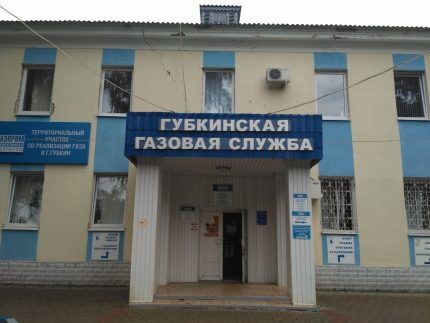
In this case, not only convenience, but also the price and time of the project depends on the ability to find a common language and compromise.
Option 1 - mass gasification of the village
To find out the opinion of the collective of summer residents, the head of SNT organizes general meetings on the issue of gasification. If you are lucky and all members of SNT agree to carry out gas - now or a little later - the head of SNT will handle the paperwork.
According to the law, complete unanimity is not necessary - a majority of votes is enough, but the problem is that the amount of connection fees is necessarily divided among everyone in equal parts, including those who disagree.
It can be impossible to convince some pensioners, who definitely won’t need it, to pay a considerable fee for gasification, because they don’t even have a permanent house in their garden. This is how individual members owe debts to SNT, relationships deteriorate, and sometimes it leads to litigation.
For those who, in principle, are not against gas supply, but are not now ready to pay for it, it is proposed to conclude a loan agreement for the contribution with those summer residents who are promoting the idea of gasification.

If such an agreement has been reached, a vote needs to be held at the general meeting, the signatures of everyone who wants to supply gas to a house in SNT must be collected - they must be a majority. You also need to calculate the amount of the contribution by dividing the total amount of investments by the number of members of the partnership. Minutes of this meeting must be drawn up.
This protocol must be attached to the application for connection - just like the founding papers of the partnership, confirmation of the authority of the chairman to declare on behalf of the entire team, a drawing of the land plots and copies of papers on the ownership of each plot.
Option 2 - connecting only willing summer residents
If it is impossible to reach an agreement in the team, and you don’t want to quarrel and sue with opponents of gasification, or even if they are the majority, there is a way out. Those members of the partnership who want to supply gas can create their own organization, register a legal entity, and submit an application to the gas workers on its behalf.

It is recommended to choose the type of enterprise from two options: consumer non-profit partnership or consumer cooperative. The latter option is more difficult to set up and maintain, but allows you to legally make a profit if one of your neighbors later decides to connect to the gas network installed at your expense.
Option 3 - connecting the house to a common gas pipeline
It happens that SNT already has gas, the pipe runs along the property line, but not brought into your home. For example, if you bought a plot after general gasification, and the previous owners did not support it. Is it possible to supply gas to the garden house in this case?
Yes, but you will need permission from the organization that laid the pipe and maintains it on the balance sheet of a horticultural non-profit partnership, a consumer non-profit partnership or, much less commonly, a gas service.
In this case, the owner of the dacha provides the owner of the gas pipeline with a package of documents, including a copy of the passport, permission from the architectural authorities, topographic plan of the area, confirmation of ownership of the land and house, and a technical passport of the building from the BTI.
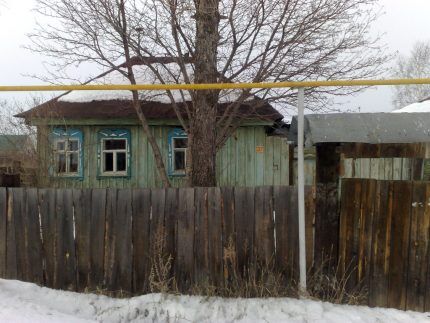
After receiving permission from the owner of the gas pipeline, with it and the following package of documents, you need to contact the gas service with an application for connection. Next, you should act in the same way as the representative of SNT during general gasification - more on this in the next section.
Procedure, prices and documents
In each region, as well as for each specific case, prices for gasification services differ significantly. This is due both to the prices of various government agencies (primarily the gas supplier) for paperwork, installation and inspection of a new branch, and to the prices for materials, equipment and services of third-party companies - for example, designers.
The procedure and list of required documents may also differ slightly locally, or for specific situations, but the overall scheme is always the same.
Stage #1 - discussion by the partnership participants
This starting stage was touched upon a little higher. The question of the feasibility of gasification of SNT must be resolved by its participants jointly, at a general meeting, against signature. Without the minutes of such a meeting, the head of the partnership simply will not accept an application for gasification - after all, he does not have the authority to independently make such decisions.
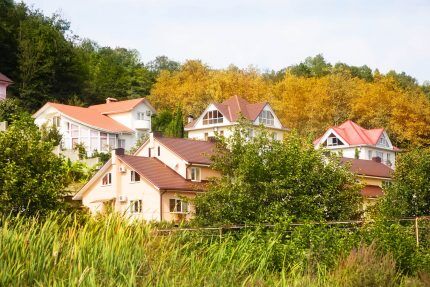
In any case, based on the results of the meeting of the SNT or NP, it is necessary to draw up a protocol in which the majority of the partnership participants sign their consent to gasification.
In addition, you need to prepare the remaining documents that are attached to the application: drawings of all plots united by the organization, and copies of documents on ownership of each plot.
Stage #2 - submitting an application to the gas service
The first stage of communication with gas workers is to contact them with a written application asking for connection. The application is submitted by an authorized person from the partnership, cooperative or partnership - usually the chairman.He will need to present a document confirming his representative powers.
The application must indicate the name and actual address of the dacha cooperative, and also attach the documents mentioned above: minutes of the meeting, site plan and copies of property rights.

This, alas, happens quite often - for example, if that line was laid a long time ago and was designed as a dead-end, and now the maximum number of subscribers who can be provided with sufficient pressure for a given pipe diameter are already connected to it.
In addition, if the nearest existing gas pipeline, from which gas is planned to be laid in SNT, is not owned by the gas service, but, for example, is on the balance sheet of the same neighboring gardening partnership, a tie-in permit will be required from the owner of this gas pipe.
To obtain such permission you may need the following documents:
- Permission from the architectural and planning department, which, taking into account the density and type of development, will determine whether gasification is safe.
- Topographical survey of the area on a scale of 1:500, on which all existing communications are marked, including the end of the gas pipeline branch to which it is planned to connect. This diagram must be certified by the gas service.
- Technical passports of buildings that will be gasified can be obtained from the BTI.
The gas supplier company will review your application and decide whether gasification is possible in this particular case.
Stage #3 - obtaining technical specifications
So that the subscriber can prepare everything for connecting to the gas network, the gas service prepares and issues to him in advance technical specifications. This document lists absolutely everything that is needed for the further procedure: from a list of documents to equipment and materials, as well as requirements for them.

For each situation, the technical conditions are different, so they are developed individually, and this service, together with the preparation of other documents, can cost from 8 to 50 thousand rubles.
To obtain technical conditions, you also need a whole folder of documents: an application, a copy of the passports of the owners of houses being gasified, copies of documents certifying ownership of the plots, as well as a topographical survey of the area.
It is worth remembering that technical specifications have a limited validity period, usually 3 years from the date of issue. During this period, you need to have time to completely complete all work on connecting and checking all of the specified objects.
Therefore, it makes no sense to immediately include those summer residents who are not ready to install gas into the house right now - while the main pipe is being installed, while all further issues with documentation are resolved, with delays on the part of the subscriber, you can easily not meet the allotted deadlines.
Those participants of the partnership who want to connect to gas later will contact the gas service on an individual basis, independently going through all the listed points again.
Stage #4 - development and approval of the project
One of the most important and difficult stages is creation of a gasification project SNT.Everything must be taken into account in it: the accessibility of the pipeline for each participant, safe distances to buildings, electrical wires and other communications, ease of operation, maintenance and repair, the aesthetic side of the issue and some other factors. In addition, the gas service very strictly checks everything for compliance with standards.
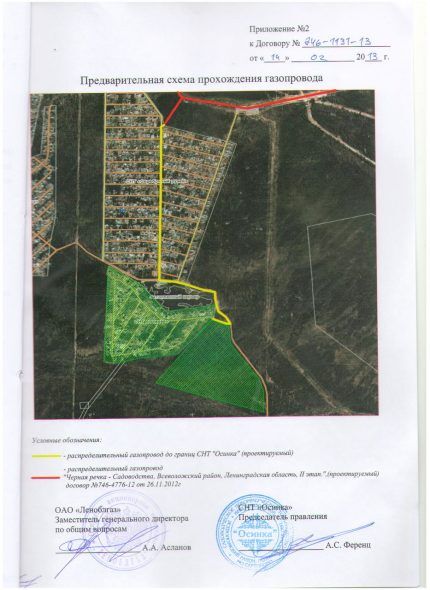
It is at this stage that third-party specialists who have experience in drawing up just such projects are most often involved. Often, the same organization is engaged in both the development of the project and the installation of the gas pipeline and equipment - by concluding such a comprehensive agreement, you can save money. Be sure to check the availability of a license to work with the gas pipeline, as well as certification of the installers.
The safest thing to do is to ask the gas service directly for advice from a design and installation organization - they often cooperate and know who won’t have to modify the project or weld the pipes. The cost of the project, depending on the scale, region and specific organization, usually ranges from 3 to 20 thousand.
If you want to lay the main gas pipeline underground so that it is not visible and does not interfere with areas, or you need to dig supports for an above-ground gas pipeline, you will need permission from the Committee on Architecture and Urban Planning to carry out earthworks.
Stage #5 - installation of the pipeline to the sections
After the project has been agreed upon and approved by the gas service, an agreement can be concluded for gas pipeline installation, if another organization does this.The first step will be to draw up an estimate for the work and a list of necessary materials and equipment.
When purchasing equipment, be sure to check that a certificate of quality and compliance with Russian standards is included - it will be needed for further registration.

When everything is ready, it’s time to pay for the services of construction and installation work and tie-ins main pipe, and the specialists will begin directly laying the pipes. Connection to the main line - about 10 - 15 thousand - is paid to the gas service, the rest - to the construction and installation team. The cost of laying a pipe from a common one to a garden house is about 2 - 5 thousand for each meter.
Upon completion of the work, a commission from the gas service must be invited to check the quality of the work performed. During the test, air is introduced into the already assembled pipeline instead of gas at the same pressure. The inspector also needs to pay 1 - 2 thousand rubles, according to local rates.
Meanwhile, the owners of the new gas network are again collecting documents: a report on the technical condition of gas ducts, ventilation and chimney pipes of boilers from firefighters, documents on inspection and sealing gas metera, copies of passports and certificates of conformity of equipment, as well as service contracts and future commissioning activities.
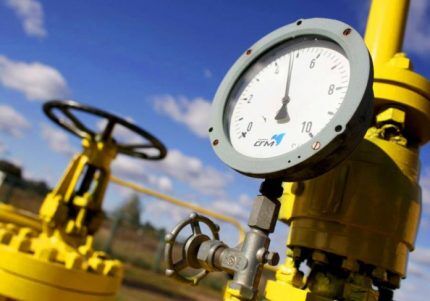
Only in exchange for such a package of documents does the contractor hand over a finished gas pipeline, to which all the executive and technical documentation is attached:
- gas pipeline acceptance certificate;
- construction passport of the gas pipeline and input;
- act for hidden work (installation of supports or underground pipes);
- diagram of underground welding seams;
- filming the outer part of the pipeline;
- quality certificate for pipes;
- test reports of welds and welder certificate.
In addition, the technical specifications and the officially approved gasification project are returned to the customer.
Stage #6 - final events
When everything is ready and checked by the gas service, it will finally release gas through the new pipes. The basis for this will be the concluded supply and launch agreement. Knowing full well that they won’t see you next time, the gas workers will take all safety measures even before the launch.
You will be required to provide an agreement for technical supervision of the gas pipeline, an agreement for the maintenance and repair of gas pipes and equipment in the house, a registration certificate for the house indicating the heated area, technical conditions, a project and acceptance certificate for the gas pipeline, an act for determining the boundaries of the division of property, passports for the meter and boiler, as well as the owner’s passport, ownership of the house and a certificate of registered residents, if any.
After concluding an agreement to start gas, you will be given safety instructions, and when the pipes are filled with fuel, a specialist will come to set up the equipment. At the end, an expert from technical supervision will appear - to final check the correctness of the connection and configuration - and the epic with gasification can be considered completed.
Responsibilities of SNT after gasification
Like any communications, and maybe even more, a gas pipeline needs constant condition monitoring and maintenance.The pipes laid in SNT are on its balance sheet, and not on the gas service, and therefore are maintained by the cooperative.
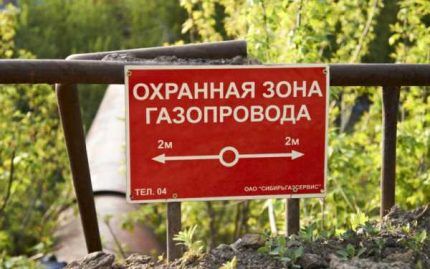
To ensure the safety of users, the legal entity involved in organizing the gas supply to SNT is obliged to perform the following actions:
- enter into an agreement with an emergency rescue service or create your own;
- define protective zones and restrictions for the areas included in them;
- maintain the fire safety of these zones, cut down forests and shrubs in them;
- submit to the land cadastre service an executive survey of the gas pipeline, on which the security zones are marked;
- organize systems for monitoring and preventing accidents, warning, communications, protection;
- develop plans for localizing possible accidents and eliminating their consequences.
Gas workers and firefighters sometimes have more extensive requirements for the owner of a gas pipeline - they will tell you about this on the spot.
Conclusions and useful video on the topic
Gasification of SNT in the Moscow region:

And how to connect a separate house to the gas pipeline is described in detail in this video:

Now you can choose which gasification scheme is suitable for your dacha, and you can also imagine what bureaucratic procedures you will need to go through. Of course, connecting gas is quite expensive. But it significantly increases the level of comfort in your country house.
Is there gas at your dacha? How much did it cost to connect if you had it? Do you often turn on the boiler and gas stove at the dacha? Join the discussion below.




Thank you for the article.The question remains - there are 400 plots in the community, 120 called themselves the owners of the pipe, having installed gas in the community. Now new members of the society are required to pay a contribution of 200-300 thousand rubles, although it cost them 130 thousand rubles, while new members will not receive a refund from those newly joining, the refund will only be given to the first 120 members. What should new members of SNT do in this case?
Only 2 options:
1. agree to the terms of the gas pipeline owners and cut into their pipeline.
2. disagree and pull your own))))))
What should I do if the contractor laid a high-pressure gas pipe next to my site too close and now I cannot connect the gas.
Good afternoon. Sorry for delay. There are three types of gas pipelines, differing from each other in the pressure of the moving gas inside.
1. High pressure.
2. Average.
3. Low.
It is from the latter that the wiring for household and utility needs is made. That is, the high-pressure pipe cannot pass through the village. This is the first.
Secondly, if, as I understand it, this is a low-pressure pipe that is cut into to carry gas into your own house, then it should be at a distance of 1 m from the fence and 10 m from the foundation of the house.
SNT installed a gas pipeline along the street. 150 thousand rubles were collected from those wishing to connect gas. When laying the pipeline (underground) (the activities were carried out in December), the roads were turned upside down and it was impossible to drive on them. Earlier, the chairman promised to level the roads. Now, at a supposedly remote meeting, they are charging 2,500 rubles from those who want to install gas. for road repairs in SNT. Is this legal?
Good afternoon.Gasification of any facility is done according to a project, an integral part of which is the cost estimate. It indicates at the final point the figure that must be paid. It is usually divided in equal shares among those who connect to the gas pipe. If any other additional payments suddenly appear, then the head of SNT must justify this by showing documents.
As for the road, everything is decided by the general meeting. The management is responsible for the repair and maintenance of roads within the SNT, allocating money from its own budget. But in this case it is force majeure, so an additional fee may be required for repairs.
Good afternoon. When supplying gas to my house, shut-off valves (pipes 1.5-2 m high with a tap with 2x2 fencing (poles and mesh) were placed on the internal border with another site. It will be approximately 5 meters from the border of the external fence. Do I have the basis for demanding the transfer of this structure to the external border?
Good afternoon Is it possible to gasify SNT if public roads belong to the district administration?